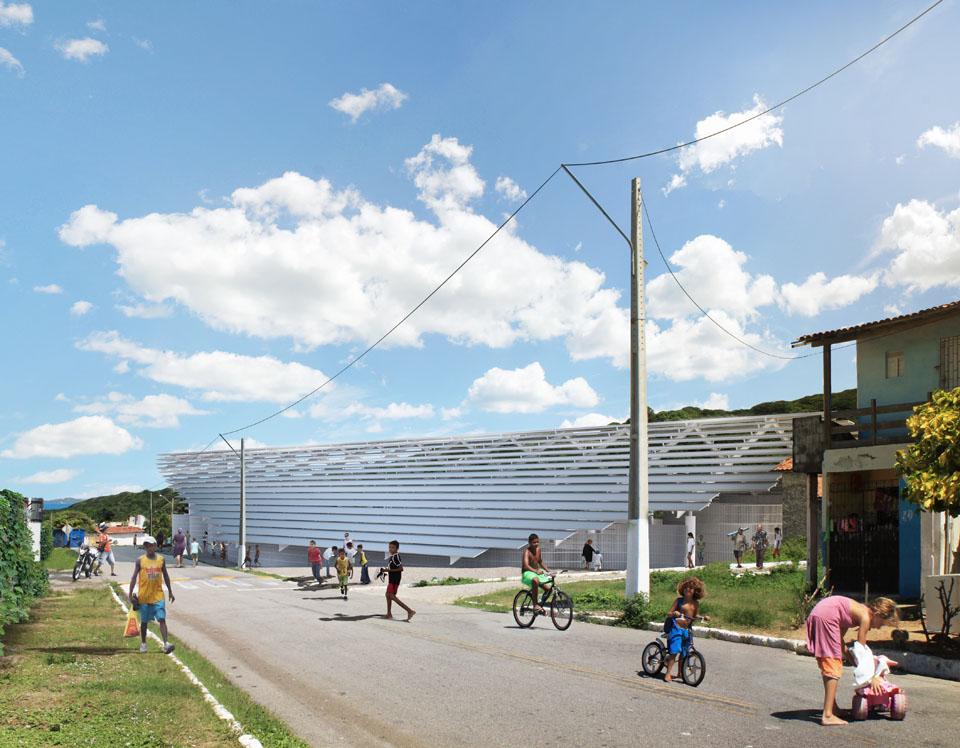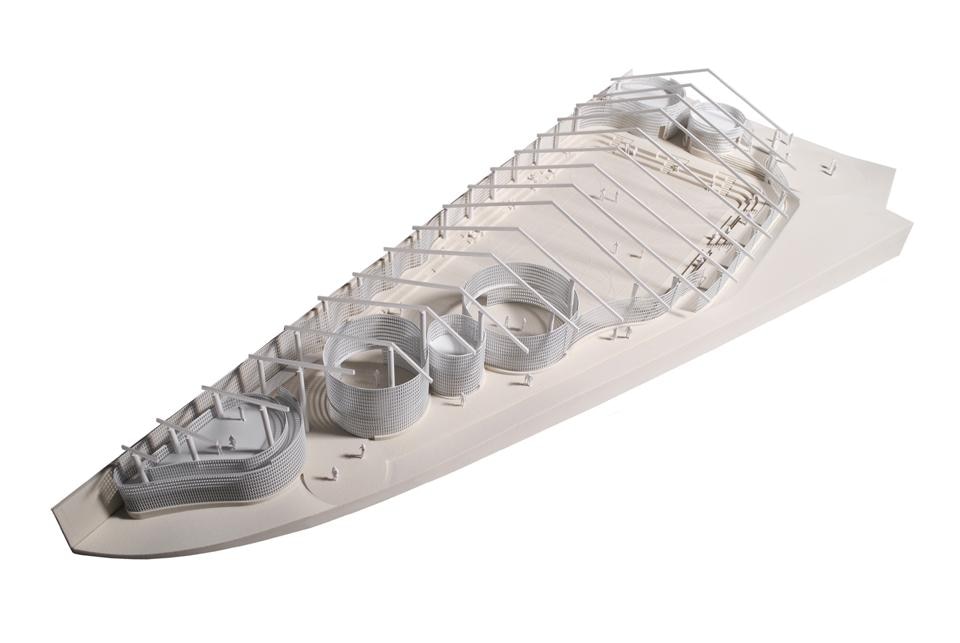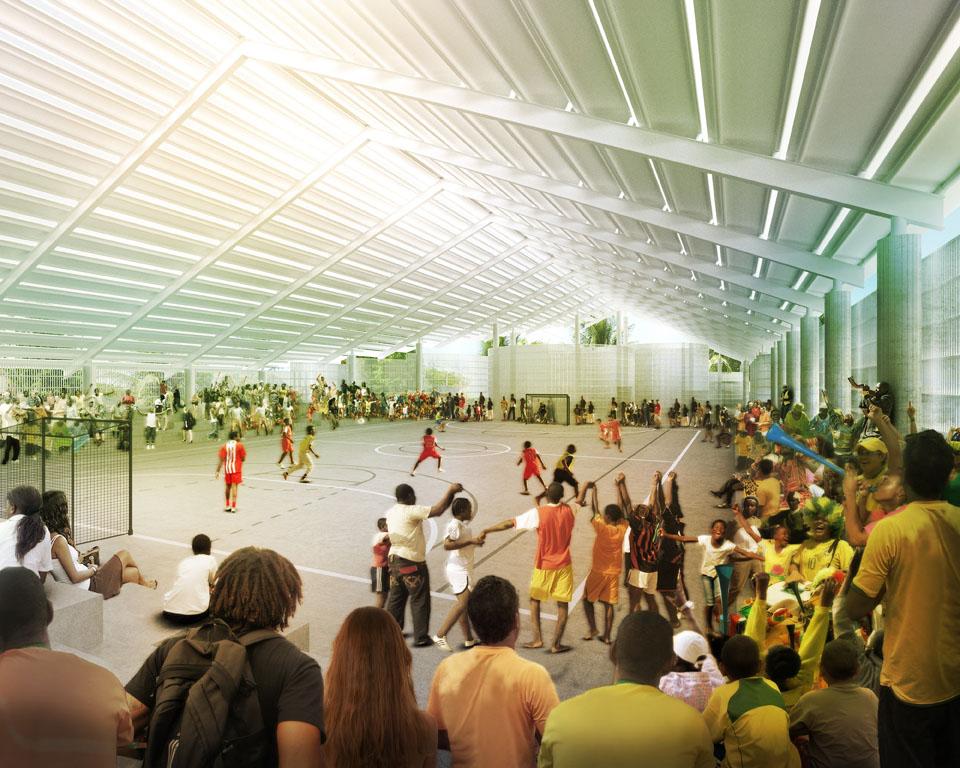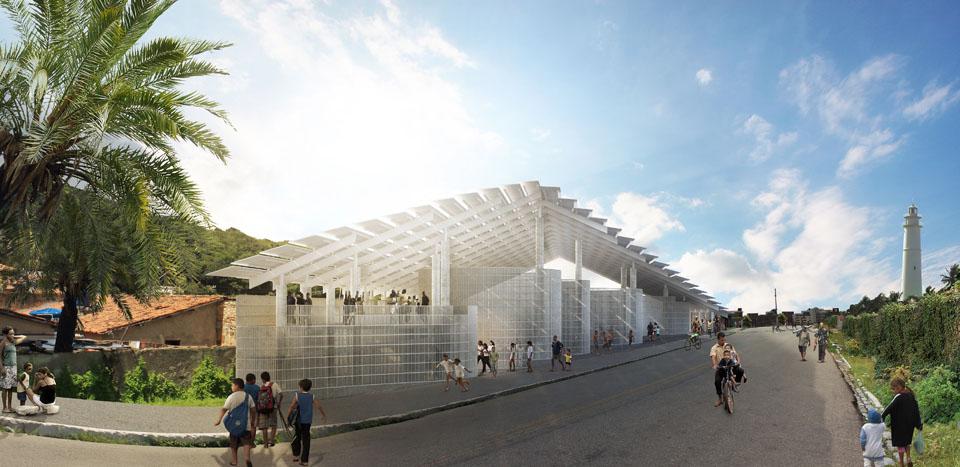The urban concept takes into account the potential and challenges of the neighbourhood – its beautiful setting on the dunes overlooking the ocean, its turbulent history of a gradually urbanised informal settlement, and its vibrant and strong community today. The design process entailed identifying the missing or underdeveloped urban activities in the neighbourhood, spotting available spaces within the densely built-up area and distributing the new activities within the areas potentially available for development. This approach allows the evolution of Mãe Luiza to stem from the particular needs of its community and the specific potential of the site.
The proposal includes a sequence of new buildings, continuing the process of punctual interventions initiated by the Centro Sócio. In this case, however, new facilities are concentrated, placed next to each other, so they can work together forming a necklace and creating a new community centre catalyzing new public activities in order to focus the development of the area, create a new perception of the neighbourhood, and open up the neighbourhood to its residents and the natural beauty that surrounds it. The Gymnasium, containing a sports field with seating for 350 people, as well as multipurpose and service rooms, is the pioneering architectural project to the Vision creating a new public venue for all the people of Mãe Luiza.


Under the roof, the ground forms a covered landscape that follows the existing topography and adapts it to the diverse uses. In the project, the building floor is a single, complex and unified surface that holds the sports field, folds up for the seating and the stairs, rises up with the ramps and merges with the soft sandy field outside. The uniform use of concrete further unifies the interior ground, while its different grain, colour and texture give subtle differences to the discrete parts and uses of the building.
The design process entailed identifying the missing or underdeveloped urban activities in the neighbourhood, spotting available spaces within the densely built-up area and distributing the new activities within the areas potentially available for development.

Partner: Jacques Herzog, Pierre de Meuron, Ascan Mergenthaler, Markus Widmer
Project Architect: Tomislav Dushanov (Associate), Mariana Vilela
Project Team: Melissa Shin, Diogo Figueiredo
Client: Centro Sócio Pastoral Nossa Senhora de Conceição, Natal, Brasil
Site Area: 5.206.84 sqm
Building Footprint: 1.996 sqm
Building Dimensions:
Length: 91.80 m
Width:32.80 m
Height: 10.60 m
Gross Floor Area (GF): 2.052.5 sqm
Number of Levels: 2
Concept Design: March 2011- May 2011
Schematic Design: June 2011- July 2011
Design Development: August 011- November 2011
Construction Documents: December 2011- March 2012
Construction: 2012 - 2013


